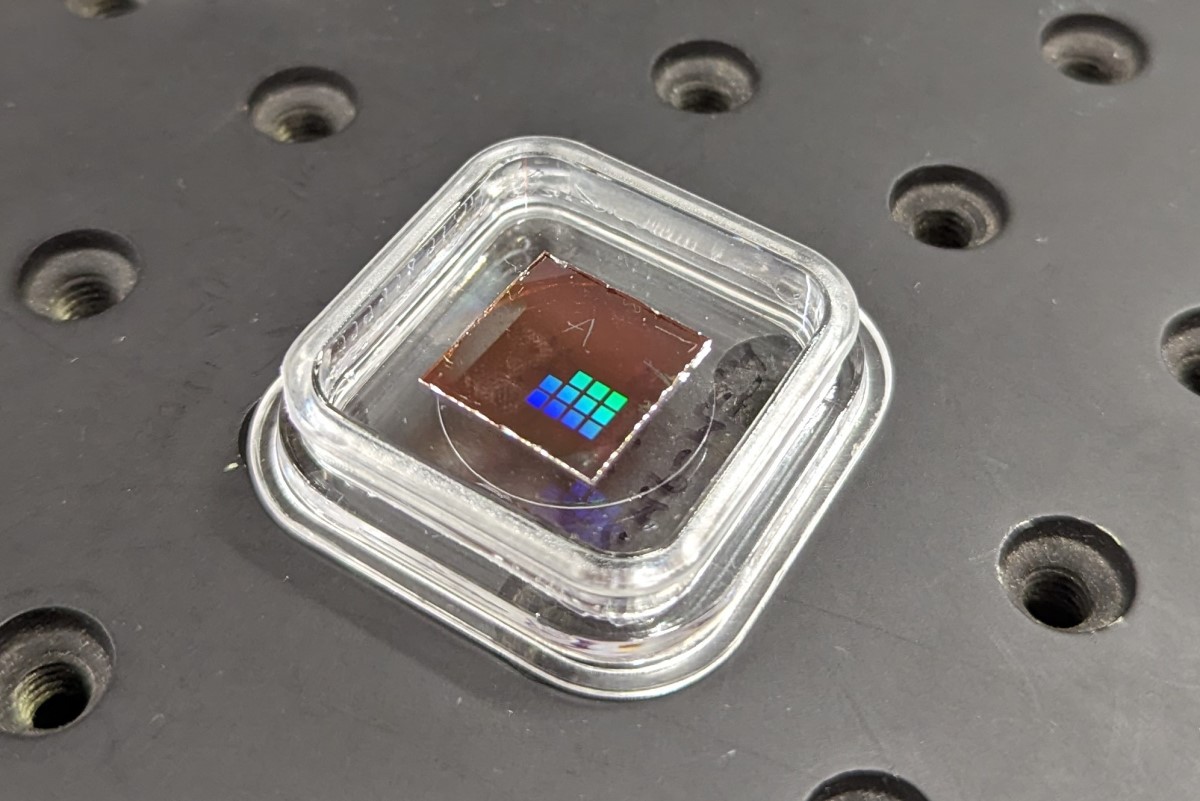The sensors could be fitted at almost no cost to drones and satellites to assist farmers with crop monitoring, irrigation and pest control.
Research on the new device is published in Nature Communications.
Lead author Dr Michele Cotrufo says the system’s ability to switch between processing operations, from edge detection to capturing detailed infrared images, was a significant crop health sensor.
The capability to switch to a detailed infrared image could allow farmers to collect more information when the remote sensor identifies areas of potential pest infestations.
“While a few recent demonstrations have achieved analogue edge detection using metasurfaces, most of the devices demonstrated so far are static. Their functionality is fixed in time and cannot be dynamically altered or controlled,” says Cotrufo, who conducted his research at City University of New York (CUNY).
“Yet, the ability to dynamically reconfigure processing operations is key for metasurfaces to be able to compete with digital image processing systems. This is what we have developed.”
The new element is a flat fibre optics material that assists with miniaturisation of the sensors, according to Ann Roberts from the University of Melbourne, who is lead investigator with ARC Centre of Excellence for Transformative Meta-Optical Systems (TMOS).
“Traditional optical elements have long been the bottleneck preventing the further miniaturisation of devices. The ability to replace or complement traditional optical elements with thin-film optics breaks through that bottleneck,” Roberts says.
The compact, lightweight sensor system with infrared imaging can rapidly switch between edge detection – imaging the outline of an object, such as a fruit – and extracting detailed infrared information, without the need for creating large volumes of data and using bulky external processors.
Professor Madhu Bhaskaran at RMIT University in Melbourne, who was part of the research told Cosmos: “This technology has been 2-3 years in the making but it has taken many years of fundamental research in metasurfaces and smart materials to get here.”
The prototype sensor system comprises a filter made with a thin layer of vanadium dioxide.
“Materials such as vanadium dioxide add a fantastic tuning capability to render devices ‘smart’”, Roberts says.
“When the temperature of the filter is changed, the vanadium dioxide transforms from an insulating state to a metallic one, which is how the processed image shifts from a filtered outline to an unfiltered infrared image.
“These materials could go a long way in futuristic flat-optics devices that can replace traditional lenses for environmental sensing applications – making them ideal for use in drones and satellites, which require low size, weight and power capacity.”
RMIT holds a granted US patent and has a pending Australian patent application for its method of producing vanadium dioxide films.
Spying on moss with miniature sensors





















Discussion about this post